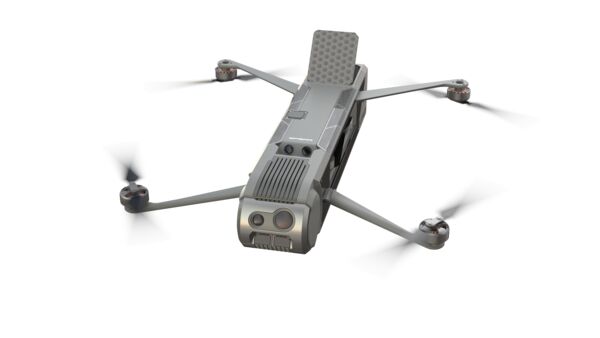
SpearUAV is developing a new, micro-tactical loitering munition with a precision-strike capability. (SpearUAV)
SpearUAV has detailed the development of an ultra-lightweight micro-tactical loitering munition (LM) for small tactical units − squad level and below − with a precision-strike capability against moving and stationary line-of-sight and beyond-line-of-sight targets.
A company spokesperson provided Janes with an update of this company-funded initiative that is the latest addition to its unmanned air system (UAS) capabilities, which include the Ninox 103 underwater submarine-launched and the Ninox 40 MT (micro-tactical) UASs.
The new Viper concept provides for a series of different calibre, lightweight, modular payloads, optionally recoverable, low acoustic/radar cross-section/thermal signature, folding quadcopter intelligence, surveillance, target acquisition, and reconnaissance (ISTAR)/LM systems housed in ruggedised, ready-to-deploy, hermetically sealed ‘smart' capsules. Each capsule is furnished with an integrated proprietary launch mechanism, and the capsule also acts as a wireless router between the encapsulated loitering system and the user command-and-control (C2)/ground station.
The LM has a maximum take-off weight of 1.2 kg, which includes an ISTAR guidance assembly and a kinetic payload. The all-up system − LM and capsule − weighs 2.2 kg, and it can be ‘worn' as part of an integrated tactical assault pack, the spokesperson said.
Powered by a low-acoustic signature electric engine using lithium-ion batteries, Viper has a line-of-sight communication range of up to 5 km and an endurance of up to 20 minutes. Standard features on the Viper include: a dual electro-optical/infrared seeker and tracker; artificial intelligence-aided autonomous target classification and tracking and automatic target recognition; global navigation satellite system and inertial measurement unit-aided autonomous waypoint navigation; a commercial off-the-shelf, two-way datalink (open architecture enables third-party datalink integration); geo-fence and mission-abort functions; and embedded point-to-multipoint communication.
Looking to read the full article?
Gain unlimited access to Janes news and more...



